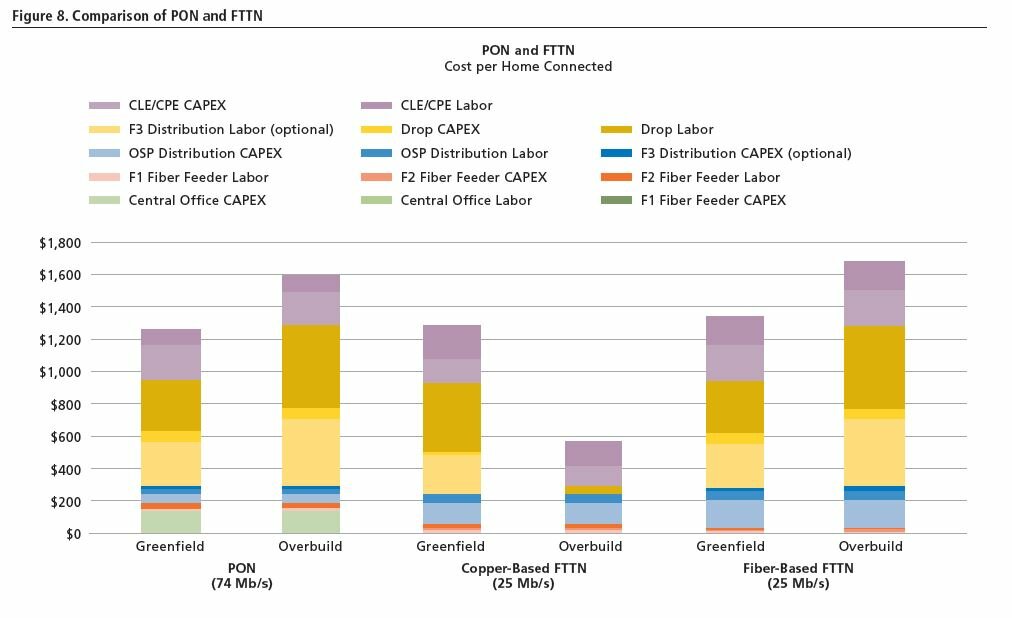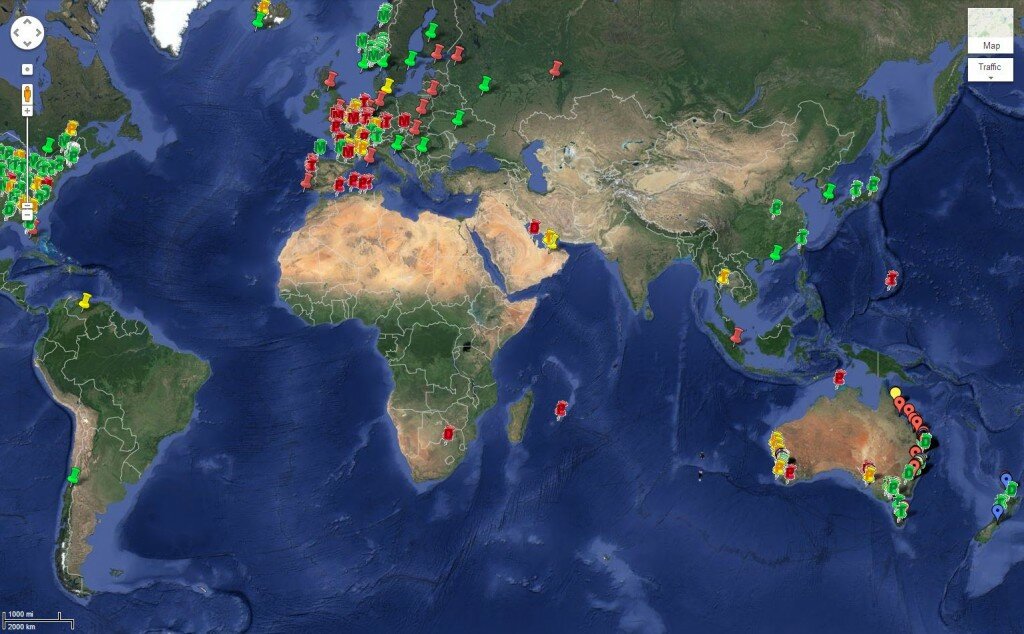Recently Senator Stephen Conroy made a speech in the Senate regarding the National Broadband Network (NBN) Senate Committee’s findings regarding Malcolm Turnbull’s “Strategic Review”. While the opinion of the committee is debatable, the facts stand on their own: the idea of an Fibre to the Premises (FTTP) network has become the benchmark for a world class communications network.
As Conroy himself put it: a Conrovian pandemic.
It’s clear when looking at the Strategic Review that the predictions do not add up, especially when considering the rate of growth of internet use. Even the laughable guarantees of 25Mbps by 2016 are abandoned in the face of such a one-eyed “review”.
There is mounting evidence that Turnbull and NBN Co have all but walked away from any guarantees, with Bill Morrow attempting to blame a lack of speed guarantees on Retail Service Providers (RSP), rather than the technology. Going so far as to claim he doesn’t even understand the concept of “sync speeds” (the speed of a connection at the hardware level).
This all leads to a truly dim picture for Australia.
So what is happening in the rest of the world?
In New Zealand a Gigabit Passive Optical Network (GPON) is being deployed, much like the NBN was before Turnbull issued the Statement of Expectations (SoE) without his precious Cost-Benefit Analysis (CBA). Indonesia are deploying XGPON – a 10Gbps variant of GPON, which runs at 2.5Gbps – replacing their ailing copper network in the biggest communications project their country has seen.
In the North America we’re seeing providers like Bell Aliant in Canada and Google Fibre in the US, to name just two of dozens, deploy FTTP using either Active Optical Network (AON) or GPON. In South America we’re seeing Brazil we’re seeing multiple providers roll out FTTP, some are even ripping out their FTTN networks in the process. In Africa we’re seeing Kenyan and South African providers kick into gear. In Europe, the Middle East, & Asia, providers are full steam ahead with rollouts or upgrades to existing FTTP networks, with the United Arab Emirates having the highest penetration of FTTP in the world.
Apparently, as Conroy stated, there is a pandemic.
It’s clear after a number of years reporting on the NBN that there are many who have no idea why we would ever need this fibre. Apparently there’s some mysterious technology that will make it all redundant. When looking at R&D I find it hard to see any competing technology that could possibly take the place of fibre optics.

Fibre-to-the-Most Economic Point: A 2007 Alcatel-Lucent document showing cost differences between GPON & FTTN. With added the cost of buying Telstra Copper, Brownfields FTTN looks less attractive.
There is no evidence that buying a copper network, let alone renting it, will be of any benefit to Australia. Many of the assumptions made by Malcolm Turnbull rely on being an incumbent provider. The fact that NBN Co only owns what they have put in the ground dictates that the rollout, in reality, is a “greenfields” (where there is no existing infrastructure) rollout.
This makes the Strategic Review’s findings moot as they assume that Telstra, who make over $7 billion a year from their fixed line network, would willingly hand it over for free. Not only this, the Strategic Review assumes that both Optus and Telstra will hand over their Hybrid-Fibre Coax network for free. Telstra alone spent $3 billion deploying their network back in the mid-90’s, assuming that they will hand this over for free is ridiculous.
As has been mentioned repeatedly before, and since, the election, this cost is a big unknown. For Turnbull to demand NBN Co change the rollout via the SoE without any deal with Telstra, let alone a his precious CBA being completed, is surely folly.
Fellow NBN observer, data hound, and publisher of MyNBN.info, Kenneth Tsang made a great point during his evidence in the Senate Committee on the NBN; NBN Co are stopping the rollout of the most advanced technology (FTTP) before they finish the rollout of the outdated technology (FTTN). This means that when we are demanding higher speeds, older technology will be our only option.
In a world where predicting technology trends is a vital part of business, to rollout technologies in reverse order is pure madness. There is no logic at all to cancelling the most advanced part of the network rollout earlier in the project, so cancelling it at any point would be madness. Unless Turnbull is willing to fork out for Fibre to the Drop Point (FTTdp), essentially the pit out the front, straight away, the project will be laughing stock.
This, in many ways, demonstrates the political aspect to everything Malcolm Turnbull, and NBN Co by extension, has done since the election. The rhetoric of ‘more transparent’ has died off. The demands for board members who actually know how to rollout are gone. The speed guarantees are now a distant memory.
As was shown in the Senate Committee, NBN Co’s new executive team are purely there to obfuscate the true intentions of Malcolm Turnbull: to destroy the NBN. Mass slowdowns since the election are passed off as ‘stabilisation’, although I’m not sure how going from almost 5 000 premises passed a week down to a paltry 1 000 premises passed weekly is not stabilising, it’s stalling.
The almost complete shutdown of Telstra’s pit and pipe remediation is not stabilising. Nor are any of the other measures put in place by Turnbull’s team of Telstra executives.
It’s clear there are conflicts of interest across the board, with ex-Telstra staff negotiating with Telstra. Even Turnbull’s own Cost-Benefit Analysis, that is now magically not needed, has Henry Ergas on the panel; a man who campaigned for Senator Zed Seselja (sorry, not Turnbull as previously published).
This leads me to believe there is no intention of building a network that’s fair and equitable for all, but playing into the hands of Telstra, the Liberal party, and their backers (namely Murdoch).

A World of Fibre: If this is a Conrovian Pandemic, bring it on!
With a budget slashing funding for many parts of the Information and Communication Technology (ICT) sector, there is little chance of becoming a world leader in any area as the support structures required to service modern businesses and industry, telehealth, and distance education, will be decimated. Instead of looking to the future, we have a government stuck in the past.
Looking to deliver a broadcast medium, rather than collaboration system. Looking to build roads, rather than rail and communications infrastructure. Looking to pay polluters, rather than make them pay. Looking to scratch their mates’ backs, rather than look after the needy in our country.
Decisions made today will ensure that we will fall even further behind the world (even the third world). The blame will squarely land at the feet of the Liberal party, much like the blame for our current predicament. If it weren’t for sale of Telstra, and the subsequent repeated refusal to co-fund Fibre to the Node upgrades, by the Howard government, the NBN would cost much less, be far further along, and we’d be moving from 50Mbps to 1Gbps, rather than less than 5Mbps to 25Mbps.
For me, I’d rather a Conrovian Pandemic than a Turnbullian Turd.








